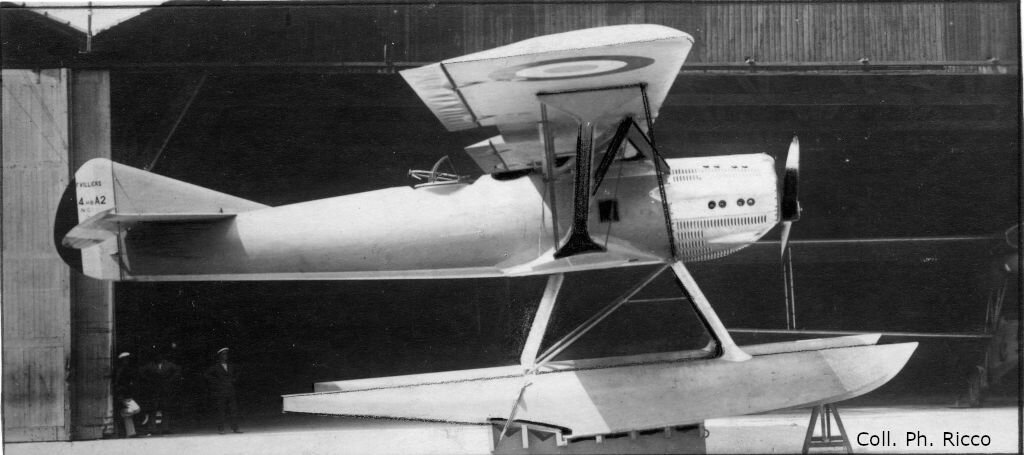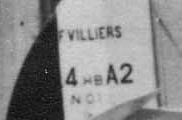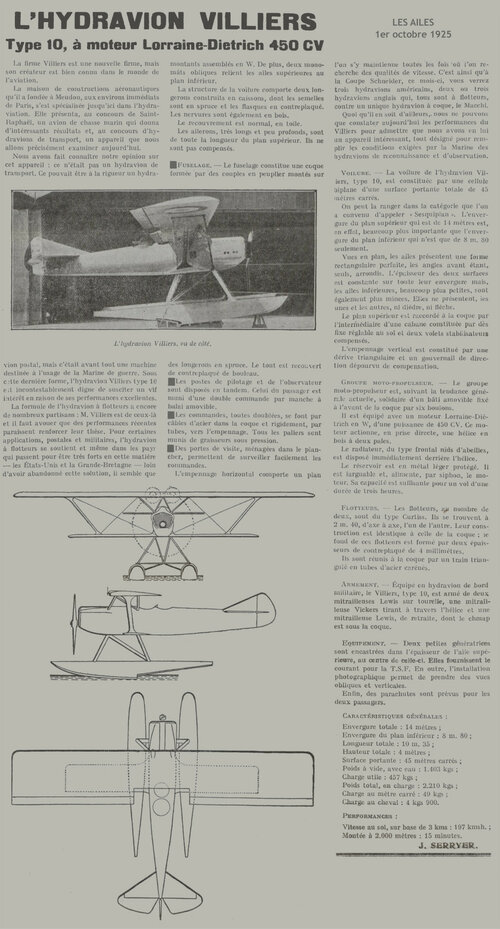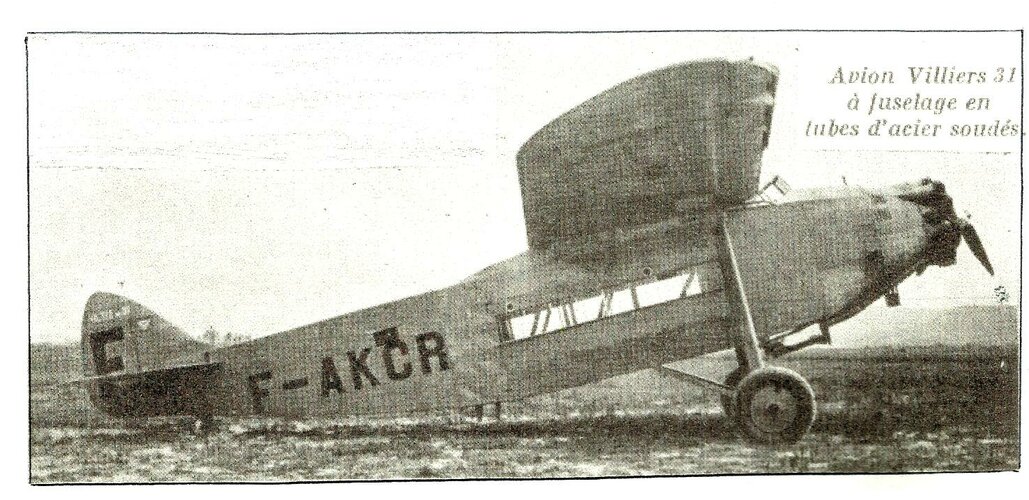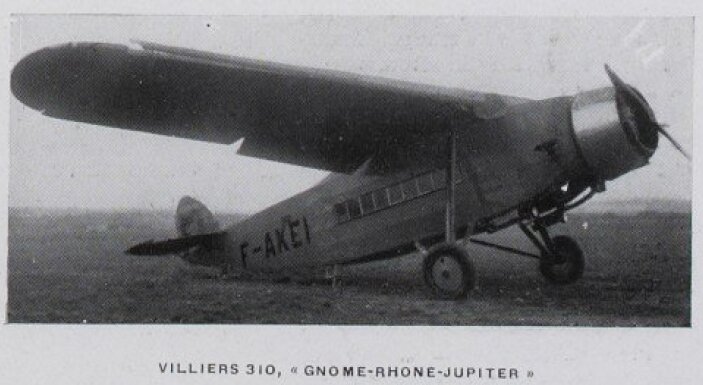- Joined
- 26 May 2006
- Messages
- 34,899
- Reaction score
- 15,760
Hi,
as I promised to talk about this company,in 1924, the French aircraft manufacturer Ateliers
d'Aviation François Villiers was formed at Meudon near Paris,later I will mention its list.
Vil.I ? was unknown,but may it was a single seat carrier based fighter project of 1924 competition
Vil.II was a two-seat sesquiplane shipboard fighter,powered by one 450 hp Lorraine-Dietrich 12Eb 12-cylinder W engine
Vil.III was a two-seat postal project, powered by one 450 hp Lorraine 12Eb 12-cylinder W engine. 1927, not built
Vil.IV was a two-seat single bay sesquiplane reconnaissance seaplane,on two floats,powered by one
450 hp Lorraine-Dietrich 12Eb water-cooled W-12 engine
Vil.IVbis was a version with a single central float,later became Vil.VIII
Vil.V was a two seat biplane to meet an 1926 (Aviation Militaire CN.2) requirement,for two seat night fighter,powered by one 450 hp Lorraine-Dietrich12 Eb water-cooled 12-cylinder engine
Vil.VI ? was unknown,but may it was a development of Vil.II as a fighter project
Vil.VII was a single-seat fighter seaplane project, powered by one 420 hp Gnome-Rhône 9Ab Jupiter. 1926, not built
Vil.VIII single seat parasol wing monoplane for 1926 competition,for AMC.1,a single seat shipboard fighter,powered by one 300 ho Hispano-Suiza 8Fb engine
Vil.IX was two seat reconnaissance float seaplane,it had a single main float with twin stabilizing floats,developed from Vil.4
Vil.X was also two seat reconnaissance float plane,with two main floats,developed
from Vil.4
Vil.XI was a single seat observation and recce catapult launched seaplane
version of Vil.8 (not Vil.4),powered by one 450 ho Lorraine 12 Eb engine
Vil.XII to XX maybe not used
Vil.21 ? was unknown,but my it was a three seat reconnaissance seaplane project
Vil.22 ? was unknown,but may it was four seat reconnaissance seaplane bomber project
Vil.23 was a twin engined seaplane prototype (Exploration four-seat), powered by two 420 hp Gnome-Rhone 9Ab Jupiter engines, mounted in tandem. 1929, only one not finished
Vil.24 was a two-seat single bay sesquiplane night fighter for Army or Navy,the most notable as the first French military aircraft to be fitted with leading edge slats,powered by one 450 hp Lorraine 12Eb Courlis water-cooled W-12 engine
Vil.25 ? was unknown,but may it was a heavy reconnaissance seaplane torpedo bomber project
Vil.26 was a four-seat low-wing patrol and escort monoplane of 1928/29,powered by one 420 hp Gnome & Rhône 9A 9-cylinder radial engine
Vil.310 was a high-wing transport monoplane,could accommodated 2 crew + 8 passenger,powered by one 420 hp Gnome & Rhône 9Ab 9-cylinder radial engine
Vil.320 was a single engined amphibian seaplane prototype,intended for
1930 competition for postal seaplane
Vil.330 was a twin engined exploration and reconnaissance seaplane,on floats project,may be with high-wing as the Vil.300,project of 1931
- To be continued
as I promised to talk about this company,in 1924, the French aircraft manufacturer Ateliers
d'Aviation François Villiers was formed at Meudon near Paris,later I will mention its list.
Vil.I ? was unknown,but may it was a single seat carrier based fighter project of 1924 competition
Vil.II was a two-seat sesquiplane shipboard fighter,powered by one 450 hp Lorraine-Dietrich 12Eb 12-cylinder W engine
Vil.III was a two-seat postal project, powered by one 450 hp Lorraine 12Eb 12-cylinder W engine. 1927, not built
Vil.IV was a two-seat single bay sesquiplane reconnaissance seaplane,on two floats,powered by one
450 hp Lorraine-Dietrich 12Eb water-cooled W-12 engine
Vil.IVbis was a version with a single central float,later became Vil.VIII
Vil.V was a two seat biplane to meet an 1926 (Aviation Militaire CN.2) requirement,for two seat night fighter,powered by one 450 hp Lorraine-Dietrich12 Eb water-cooled 12-cylinder engine
Vil.VI ? was unknown,but may it was a development of Vil.II as a fighter project
Vil.VII was a single-seat fighter seaplane project, powered by one 420 hp Gnome-Rhône 9Ab Jupiter. 1926, not built
Vil.VIII single seat parasol wing monoplane for 1926 competition,for AMC.1,a single seat shipboard fighter,powered by one 300 ho Hispano-Suiza 8Fb engine
Vil.IX was two seat reconnaissance float seaplane,it had a single main float with twin stabilizing floats,developed from Vil.4
Vil.X was also two seat reconnaissance float plane,with two main floats,developed
from Vil.4
Vil.XI was a single seat observation and recce catapult launched seaplane
version of Vil.8 (not Vil.4),powered by one 450 ho Lorraine 12 Eb engine
Vil.XII to XX maybe not used
Vil.21 ? was unknown,but my it was a three seat reconnaissance seaplane project
Vil.22 ? was unknown,but may it was four seat reconnaissance seaplane bomber project
Vil.23 was a twin engined seaplane prototype (Exploration four-seat), powered by two 420 hp Gnome-Rhone 9Ab Jupiter engines, mounted in tandem. 1929, only one not finished
Vil.24 was a two-seat single bay sesquiplane night fighter for Army or Navy,the most notable as the first French military aircraft to be fitted with leading edge slats,powered by one 450 hp Lorraine 12Eb Courlis water-cooled W-12 engine
Vil.25 ? was unknown,but may it was a heavy reconnaissance seaplane torpedo bomber project
Vil.26 was a four-seat low-wing patrol and escort monoplane of 1928/29,powered by one 420 hp Gnome & Rhône 9A 9-cylinder radial engine
Vil.310 was a high-wing transport monoplane,could accommodated 2 crew + 8 passenger,powered by one 420 hp Gnome & Rhône 9Ab 9-cylinder radial engine
Vil.320 was a single engined amphibian seaplane prototype,intended for
1930 competition for postal seaplane
Vil.330 was a twin engined exploration and reconnaissance seaplane,on floats project,may be with high-wing as the Vil.300,project of 1931
- To be continued
Last edited:

